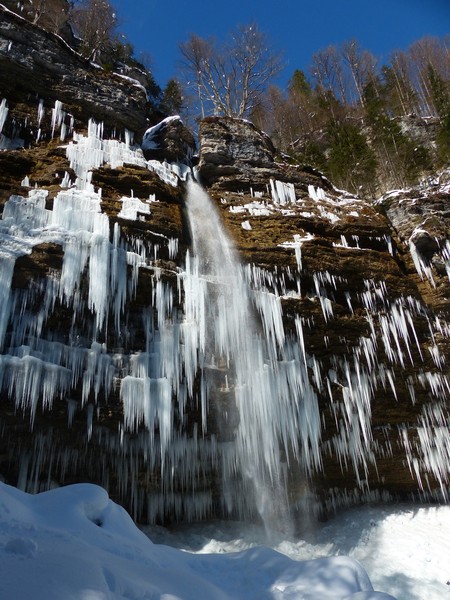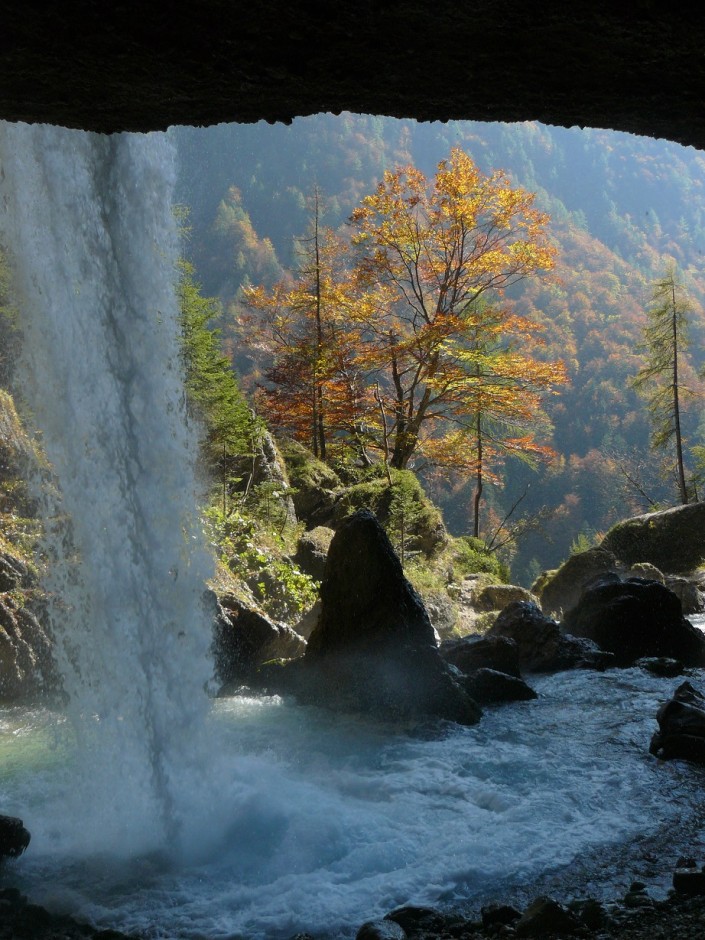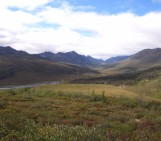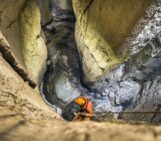Cyril Mayaud is kicking of this week’s Imaggeo on Mondays with an insight into what waterfalls in winter can tell us about their local hydrology…
The picture below shows the lower Peričnik waterfall during winter season. This cascade system is composed of two successive waterfalls that stretch some 16 metres (upper fall) and 52 metres (lower fall) high and is one of the most beautiful natural sights in the Triglav National Park. The cliff is located at the western rim of a U shaped valley and is composed of a very permeable conglomerate rock, which is made up of glacier material that accumulated at the rims of the valley back when the glacier retreated.
The high permeability of the rock provides an important path for water transfer, letting it infiltrate between the level of the upper and the lower fall. This transfer is particularly visible if you walk in the passage under the fall, where the infiltrated water falls at an intensity comparable to a strong shower. Winter is also a fascinating time to visit the falls and see how the water flows from the upper level to the lower level. The low temperatures freeze the dripping water, creating a picturesque landscape with beautiful ice stalactites and draperies.

Peričnik waterfall, an amazing sight in Slovenia’s Triglav National Park. (Credit: Cyril Mayaud, distributed by imaggeo.egu.eu)
As hydrogeologist, I see two key scientific points of interest in this picture: the first relates to the water transfer between the two levels, which is delayed during winter (due to the low temperatures) as it shows a spatial snapshot of the infiltration processes through the outcrop. The second underlines the importance of accurately quantifying all the different hydrological processes in a given catchment in order to better understand its hydrological behaviour. As an example, the storage of water as snow is really important for mountainous catchments (like the catchment of the Fraser River in British Columbia) and plays a prominent role in retaining water during the cold season and releasing it during spring/summer.
A parallel could be also made with the hydrological behaviour of karst aquifers, which depend on a variety of processes, each with different time scales. Because these aquifers contain fractures with a huge size range (from cracks less than 1 mm wide to conduits bigger than 10 metres), these aquifers allow water to infiltrate in two very different ways, and are said to have a double infiltration capacity: rapid and localised infiltration through sinkholes and ponors, and slow, diffuse infiltration of rainwater in the unsaturated zone. The origin and path of the water can normally be differentiated during chemical sampling in the spring.
By Cyril Mayaud, University of Graz – Austria
Imaggeo is the EGU’s open access geosciences image repository. Photos uploaded to Imaggeo can be used by scientists, the press and the public provided the original author is credited. Photographers also retain full rights of use, as Imaggeo images are licensed and distributed by the EGU under a Creative Commons licence. You can submit your photos here.





